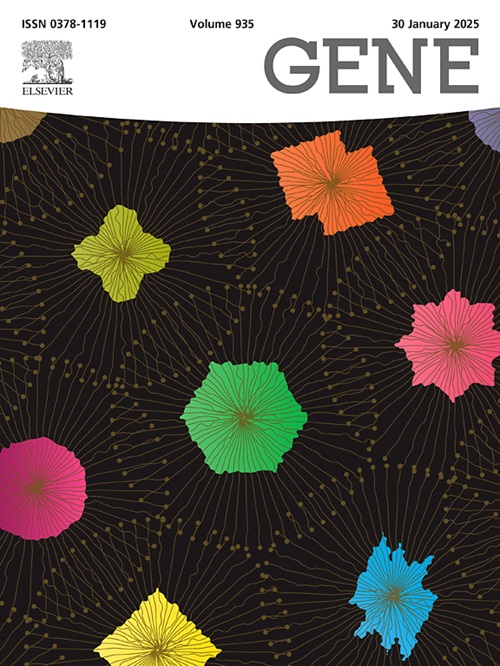Evidence for high-risk pollutants and emerging microbial contaminants at two major bathing ghats of the river Ganga using high-resolution mass spectrometry and metagenomics
IF 2.4
3区 生物学
Q2 GENETICS & HEREDITY
引用次数: 0
Abstract
An efficient wastewater treatment plant is imperative to limit the entry of emerging pollutants (EPs) and emerging microbial contaminants (EMCs) in the river ecosystem. The detection of emerging EPs in aquatic environments is challenging due to complex sample preparation methods, and the need for sophisticated accurate analytical tools. In Varanasi (India), the river Ganga holds immense significance as a holy river but is consistently polluted with municipal (MWW) and hospital wastewater (HWW). We developed an efficient method for untargeted detection of EPs in the water samples using High-resolution mass spectrometry (HRMS), and identified 577 and 670 chemicals (or chemical components) in the water samples from two major bathing ghats, Assi Ghat (AG) and Dashashwamedh Ghat (DG), respectively. The presence of EPs of different categories viz chemicals from research labs, diagnostic labs, lifestyle and industrial chemicals, toxins, flavor and food additives indicated the unsafe disposal of MWW and HWW or inefficient wastewater treatment plants (WWTPs). Besides, shotgun metagenomic analysis depicted the presence of bacteria associated with MWW viz Cloacibacterium normanse, Sphaerotilus natans (sewage fungi), E. coli, and Prevotella. Also, the presence of human pathogens Arcobacter, Polynucleobacter, Pseudomonas, Klebsiella, Aeromonas, Acinetobacter, Vibrio, and Campylobacter suggests the discharge of HWW. EPs are linked to the development, and transmission of antimicrobial resistance (AMR). Occurrence of antibiotic resistance genes (ARGs), plasmid-borne β-lactamases, aminoglycoside transferases, and ARGs associated with integrons, transposons and plasmids viz mcr-3 gene that confer resistance to colistin, the last resort of antibiotics confirmed the presence of emerging microbial contaminants. Subsequent genome reconstruction studies showed the presence of uncultivable ARB and transmission of ARGs through horizontal gene transfer. This study can be used to monitor the health of aquatic bodies as well as the efficiency of WWTPs and raise an urgent need for efficient WWTPs to safeguard the river, Ganga.
利用高分辨率质谱仪和元基因组学分析恒河两大浴场的高风险污染物和新出现的微生物污染物。
要限制新兴污染物(EPs)和新兴微生物污染物(EMCs)进入河流生态系统,高效的污水处理厂势在必行。由于样品制备方法复杂,且需要复杂精确的分析工具,因此在水生环境中检测新出现的 EPs 具有挑战性。在印度瓦拉纳西,恒河作为一条神圣的河流意义重大,但一直受到市政(MWW)和医院废水(HWW)的污染。我们开发了一种利用高分辨质谱法(HRMS)对水样中的环境污染物进行非靶向检测的有效方法,并分别从Assi Ghat(AG)和Dashashwamedh Ghat(DG)这两个主要浴场的水样中鉴定出了577种和670种化学物质(或化学成分)。不同类别的 EPs(即来自研究实验室、诊断实验室的化学品、生活和工业化学品、毒素、香料和食品添加剂)的存在表明,MWW 和 HWW 的处置不安全或污水处理厂(WWTPs)效率低下。此外,散弹枪元基因组分析显示,存在与中水处理有关的细菌,即常变形杆菌(Cloacibacterium normanse)、Sphaerotilus natans(污水真菌)、大肠杆菌(E. coli)和普雷沃特氏菌(Prevotella)。此外,人类病原体 Arcobacter、Polynucleobacter、Pseudomonas、Klebsiella、Aeromonas、Acinetobacter、Vibrio 和 Campylobacter 的存在也表明排放的是高浓度水。EPs 与抗菌药耐药性(AMR)的产生和传播有关。抗生素耐药性基因(ARGs)、质粒携带的β-内酰胺酶、氨基糖苷转移酶以及与整合子、转座子和质粒相关的 ARGs(如 mcr-3 基因)的出现证实了新出现的微生物污染物的存在。随后的基因组重构研究表明,存在不可培养的 ARB 和通过水平基因转移传播的 ARGs。这项研究可用于监测水生生物的健康状况以及污水处理厂的效率,并提出迫切需要高效的污水处理厂来保护恒河。
本文章由计算机程序翻译,如有差异,请以英文原文为准。
求助全文
约1分钟内获得全文
求助全文
来源期刊

Gene
生物-遗传学
CiteScore
6.10
自引率
2.90%
发文量
718
审稿时长
42 days
期刊介绍:
Gene publishes papers that focus on the regulation, expression, function and evolution of genes in all biological contexts, including all prokaryotic and eukaryotic organisms, as well as viruses.
 求助内容:
求助内容: 应助结果提醒方式:
应助结果提醒方式:


